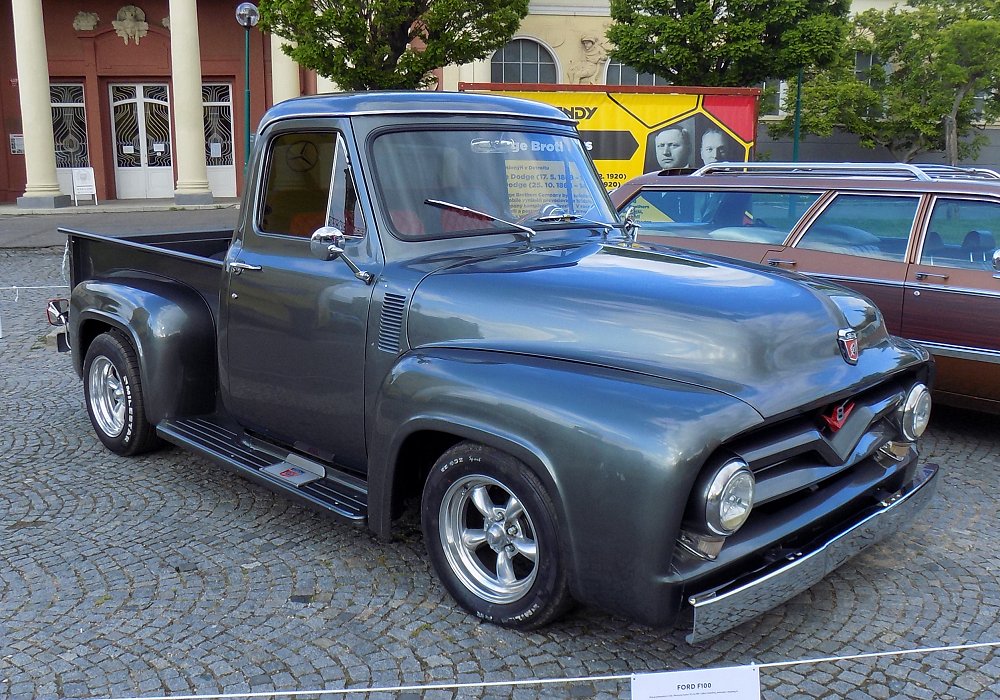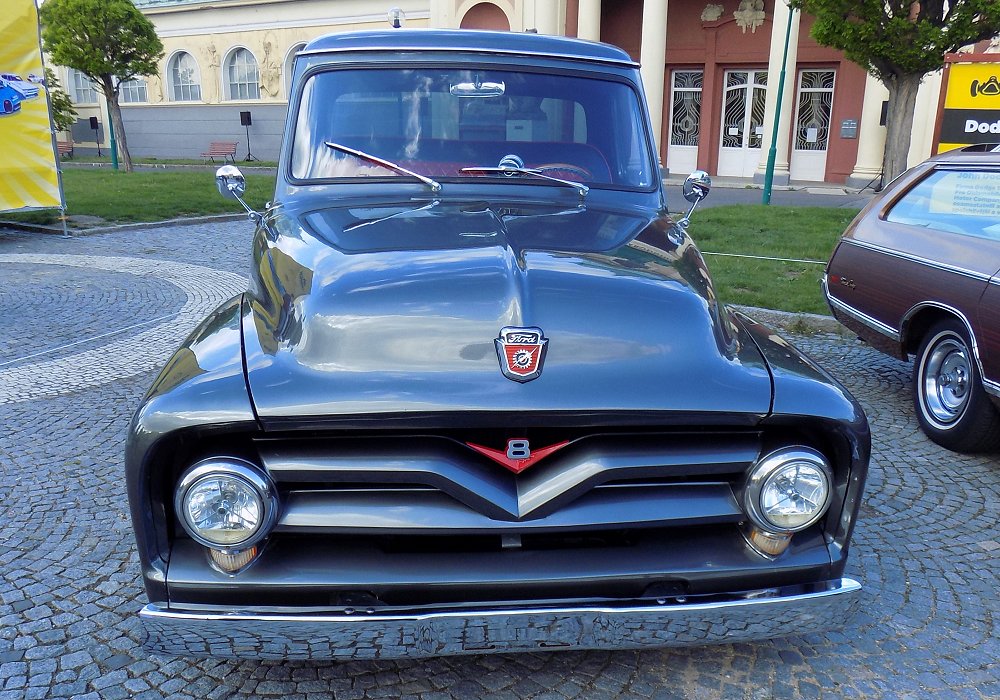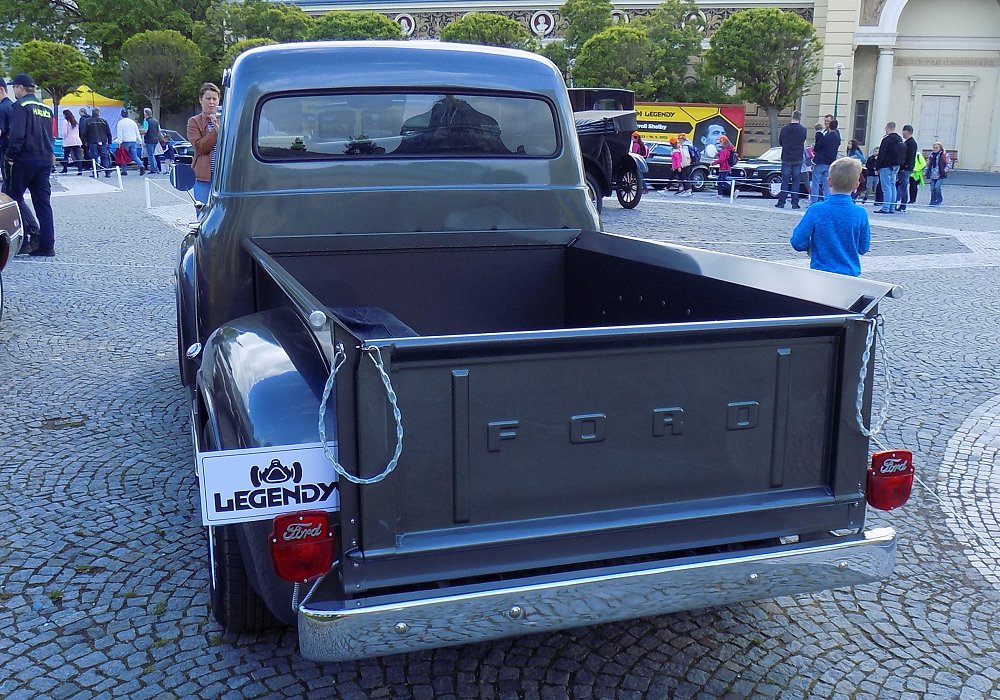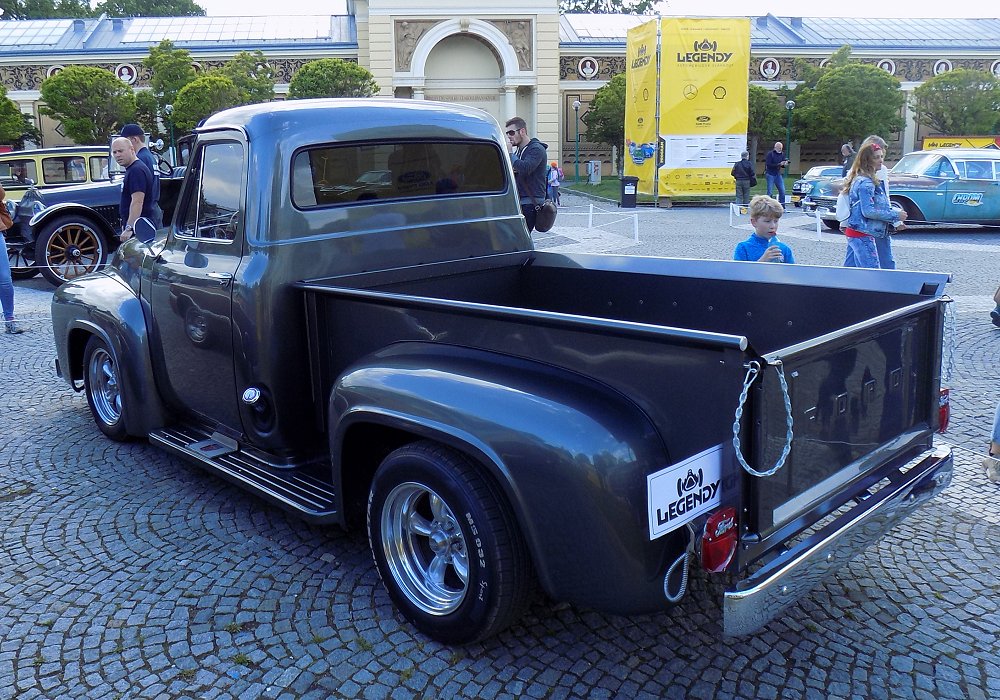Description
The Ford F100 Pickup 390 was one of the more powerful versions of Ford’s popular half-ton truck during the 1960s and early 1970s, a time when Ford’s F-Series was solidifying its reputation as a rugged and versatile workhorse. The F100 was the lightest-duty full-size pickup in Ford’s range, aimed at farmers, tradesmen, and everyday drivers who needed a truck that could handle both work and family duties. With the option of the 390 cubic inch V8, part of Ford’s FE engine family, the F100 gained the kind of power and torque that appealed to buyers wanting both strength and speed in their truck.
From the outside, the F100 390 followed the styling trends of its generation, blending toughness with simplicity. The fourth-generation F-Series (1961–1966) had clean, slab-sided bodywork and a lower stance than its predecessors, while the fifth-generation (1967–1972) featured more squared-off lines, a wider grille, and sculpted body panels that gave the truck a modern, muscular look. The 390-equipped models could be ordered with standard trim or upgraded Custom Cab and Ranger trims, which added chrome details, badging, and more stylish interiors. The F100’s design struck a balance between utility and everyday usability, with a durable steel bed and body-on-frame construction.
Inside, the F100 390 offered a cabin that was more refined than earlier work-oriented trucks, though still straightforward and functional. Bench seating was standard, upholstered in vinyl or cloth-and-vinyl combinations, with optional upgrades in higher trims. The dashboard featured large, easy-to-read gauges, with additional touches such as padded dashes, wood-grain trim, and AM/FM radios available depending on the configuration. By the late 1960s, Ford was increasingly marketing the F-Series not just as a work vehicle but also as a personal-use truck, which meant the interior became more comfortable and car-like.
The heart of the F100 390 was its V8 engine. The 390 cubic inch FE-series V8 was one of Ford’s most versatile engines, used in cars, trucks, and performance models. In the F100, it delivered horsepower ratings ranging from 255 to over 300 depending on carburetion and year, along with strong torque figures ideal for hauling and towing. This made the 390 a popular upgrade over the base inline-six and smaller V8 options, giving the truck not just capability but also the kind of performance that muscle car fans admired. Transmissions included three-speed manuals, four-speeds, and Ford’s Cruise-O-Matic automatic, giving buyers flexibility based on whether they wanted durability, control, or convenience.
On the road, the F100 390 provided a different experience compared to the base models. With the big-block V8, it had effortless acceleration and the strength to tow larger trailers or carry heavy payloads without strain. Its suspension was still tuned for durability rather than comfort, but by the late 1960s Ford had refined the ride enough to make it comfortable for daily use. The combination of power, ruggedness, and smooth cruising ability made the 390-equipped F100 popular with buyers who needed more than just a basic work truck.
The F100 Pickup 390 was priced as a step up from the more modest configurations, but its performance and versatility made it a compelling option. It represented a turning point in the truck market, when buyers began demanding both capability and comfort, laying the groundwork for the modern pickup as a multipurpose vehicle.
Today, the Ford F100 390 is a prized classic among collectors and enthusiasts. Its combination of timeless styling, robust FE-series power, and cultural significance in the rise of performance-oriented pickups makes it highly desirable. Well-preserved or restored examples, particularly those in Custom Cab or Ranger trim with factory 390s, showcase the era when Ford pickups were evolving from pure work machines into vehicles equally at home on the farm, the job site, or cruising down the highway.



